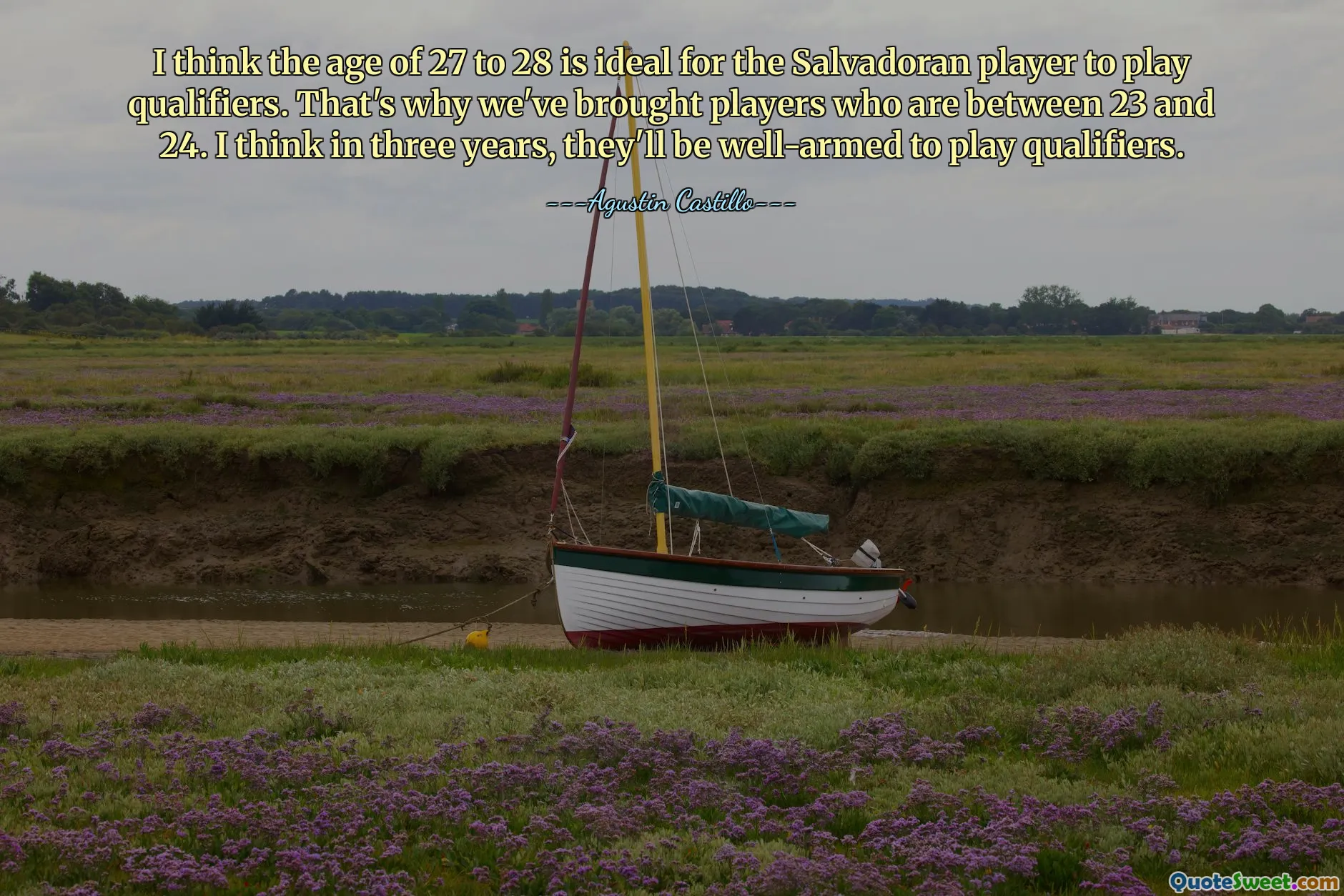
I think the age of 27 to 28 is ideal for the Salvadoran player to play qualifiers. That's why we've brought players who are between 23 and 24. I think in three years, they'll be well-armed to play qualifiers.
📖 Agustin Castillo
This quote offers insightful perspective into the strategic planning involved in national sports development, particularly in soccer. The focus on a specific age range highlights the importance of refining player development and understanding peak performance windows. At the ages of 23 to 24, these players are in a critical phase where they can develop their skills, physical conditioning, and tactical understanding, setting them up for success in major tournaments. By aiming to have players ready for qualification matches around their late twenties, coaches and organizations demonstrate a long-term vision that balances immediate needs with future potential. This period also coincides with the maturation of a player's decision-making abilities and experience, crucial for high-stakes competitions. The deliberate approach of recruiting younger players with the expectation of their growth over the next few years exemplifies a thoughtful investment in talent and sustainability of the team. It reveals an understanding that athlete development is a progressive process, requiring patience and strategic planning. Moreover, this perspective resonates with the broader principles of sports science where age maturity aligns with peak physical and mental performance. The vision shared underscores the importance of nurturing talent early on, anticipating future peak performance, and preparing young athletes not just for immediate competition but for sustained excellence in their careers. Such insights can serve as a blueprint for other sports programs aiming to build competitive teams through deliberate talent development strategies.










